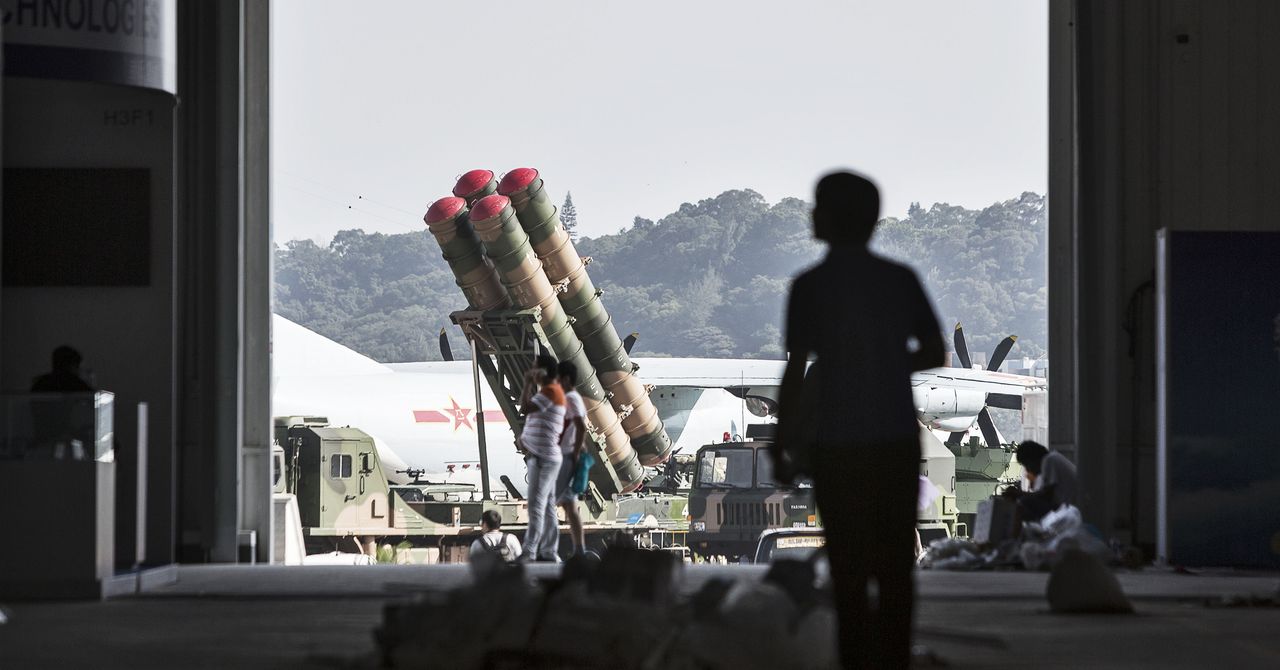U.S. Aims To Deter China With Advanced Missile Technology

Table of Contents
Hypersonic Missile Development: A Key Component of US Deterrence
Hypersonic missiles represent a significant leap forward in advanced missile technology, and their development is a cornerstone of the U.S. strategy to deter China.
Capabilities and Advantages of Hypersonic Missiles:
- Unmatched Speed and Maneuverability: Hypersonic missiles travel at speeds exceeding five times the speed of sound, making them incredibly difficult to intercept. Their highly maneuverable flight paths further complicate any defensive efforts.
- Advanced Targeting Precision: These missiles utilize sophisticated guidance systems, ensuring accurate targeting and minimizing collateral damage.
- Overcoming Existing Defenses: The speed and maneuverability of hypersonic weapons pose a significant challenge to existing missile defense systems, rendering many current technologies obsolete.
- Specific US Programs: The U.S. is actively developing several hypersonic missile programs, including the AGM-183A ARRW (Air-launched Rapid Response Weapon), which is designed to be deployed from existing bomber aircraft.
Strategic Implications for Deterrence Against China:
- Shifting the Power Balance: The deployment of hypersonic missiles significantly alters the strategic balance of power in the Indo-Pacific region, impacting China's military calculus.
- Impact on Chinese Strategies: China's military planning must now account for the threat posed by these advanced weapons, potentially forcing adjustments to its own military strategies and deployments.
- Protecting US Allies: Hypersonic missiles strengthen the U.S. commitment to its allies in the region, providing a credible deterrent against potential Chinese aggression.
Precision-Guided Munitions Enhance Strike Capabilities
Alongside hypersonic missiles, the U.S. is heavily investing in advanced precision-guided munitions (PGMs) to enhance its conventional strike capabilities.
Advanced Targeting Systems and Accuracy:
- Sophisticated Guidance: PGMs employ a variety of advanced guidance systems, including GPS, laser, and inertial guidance, allowing for pinpoint accuracy.
- Reduced Collateral Damage: The increased precision of PGMs minimizes civilian casualties and reduces the risk of unintended consequences, enhancing the legitimacy of military actions.
- Examples: The US military utilizes a wide array of PGMs, including Joint Direct Attack Munitions (JDAMs) and Small Diameter Bombs (SDBs).
Enhancing Conventional Deterrence:
- Minimizing Deployments: The precision of PGMs reduces the need for large-scale military deployments, leading to cost-effectiveness and reduced risks.
- Cost-Effectiveness: Fewer munitions are needed to achieve the same effect, leading to significant cost savings compared to older, less accurate weaponry.
- Perception of Capability: The demonstrable accuracy and effectiveness of PGMs enhance China's perception of US military capabilities, strengthening deterrence.
Investing in Missile Defense Systems: A Multi-Layered Approach
Recognizing the growing threat, the U.S. is investing heavily in enhancing its missile defense capabilities, adopting a layered approach to address various threats.
Ground-Based and Airborne Missile Defense:
- Ground-Based Midcourse Defense (GMD): The GMD system is designed to intercept intercontinental ballistic missiles (ICBMs) during their midcourse phase of flight.
- Advancements in Radar and Interceptors: Ongoing research and development efforts are focused on improving radar technology and interceptor missiles to enhance effectiveness.
- Future Plans: The U.S. continues to invest in upgrading and expanding its missile defense network to adapt to evolving threats.
Addressing the Challenges of Hypersonic Missile Defense:
- Difficulties in Interception: Intercepting hypersonic missiles poses significant technical challenges due to their speed, maneuverability, and unpredictable flight paths.
- Research and Development: The U.S. is aggressively pursuing research and development programs focused on developing effective countermeasures against hypersonic threats.
- Technological Race: The development of hypersonic missile defense systems represents a crucial element of the ongoing technological race between the U.S. and China.
The Geopolitical Context: US-China Relations and Regional Stability
The development and deployment of advanced missile technology are inextricably linked to the broader geopolitical context of US-China relations and regional stability.
The Role of Advanced Missile Technology in Shaping the Power Balance:
- Regional Alliances: The deployment of advanced missile systems influences regional alliances and partnerships, strengthening US relationships with key allies.
- Escalatory Risks: The arms race presents inherent escalatory risks, underscoring the importance of clear communication and de-escalation strategies.
- International Arms Control: Existing and potential future international arms control treaties will play a crucial role in managing the risks associated with advanced missile technology.
Economic and Diplomatic Implications:
- Economic Consequences: The arms race has significant economic consequences, impacting military budgets and resource allocation.
- Diplomatic Efforts: Diplomatic efforts are crucial for de-escalating tensions and preventing conflict.
- International Cooperation: International cooperation on missile technology is essential to managing the risks associated with proliferation and accidental conflict.
Conclusion
The U.S. strategy to deter China hinges on the development and deployment of advanced missile technology, encompassing both offensive capabilities like hypersonic missiles and precision-guided munitions, and robust defensive systems. This multifaceted approach aims to maintain a credible deterrent, ensuring regional stability and protecting U.S. interests and allies. Understanding the complexities of these advanced missile systems and their role in shaping US-China relations is vital. Stay informed about the evolving landscape of advanced missile technology and its role in shaping the future of US-China relations. Understanding the complexities surrounding the US's deterrence strategies through advanced missile technology is crucial for navigating the challenges of the 21st century.

Featured Posts
-
 Post Game Report Pirates Fall To Braves Triolo And Bullpen Highlights
May 28, 2025
Post Game Report Pirates Fall To Braves Triolo And Bullpen Highlights
May 28, 2025 -
 Roland Garros 2025 Sinner Defeats Rinderknech In Straight Sets
May 28, 2025
Roland Garros 2025 Sinner Defeats Rinderknech In Straight Sets
May 28, 2025 -
 Cuaca Jawa Tengah 22 April Perkiraan Hujan Di Semarang Siang Hari
May 28, 2025
Cuaca Jawa Tengah 22 April Perkiraan Hujan Di Semarang Siang Hari
May 28, 2025 -
 Nov Film S Benisio Del Toro I Ues Andersn Gledayte Treylra
May 28, 2025
Nov Film S Benisio Del Toro I Ues Andersn Gledayte Treylra
May 28, 2025 -
 Tottenham Target Ligue 1 Winger Transfer News And Expected Timeline
May 28, 2025
Tottenham Target Ligue 1 Winger Transfer News And Expected Timeline
May 28, 2025
Latest Posts
-
 Discounted Spring Hotel Stays Up To 30 Off Lavish Hotels
May 31, 2025
Discounted Spring Hotel Stays Up To 30 Off Lavish Hotels
May 31, 2025 -
 Exploring The Boundaries Of Ai Learning Towards Responsible Ai Development And Deployment
May 31, 2025
Exploring The Boundaries Of Ai Learning Towards Responsible Ai Development And Deployment
May 31, 2025 -
 Responsible Ai Acknowledging The Limits Of Ai Learning Capabilities
May 31, 2025
Responsible Ai Acknowledging The Limits Of Ai Learning Capabilities
May 31, 2025 -
 Exploring The Boundaries Of Ai Learning A Path To Responsible Ai
May 31, 2025
Exploring The Boundaries Of Ai Learning A Path To Responsible Ai
May 31, 2025 -
 Up To 30 Off Your Luxurious Spring Hotel Awaits
May 31, 2025
Up To 30 Off Your Luxurious Spring Hotel Awaits
May 31, 2025
